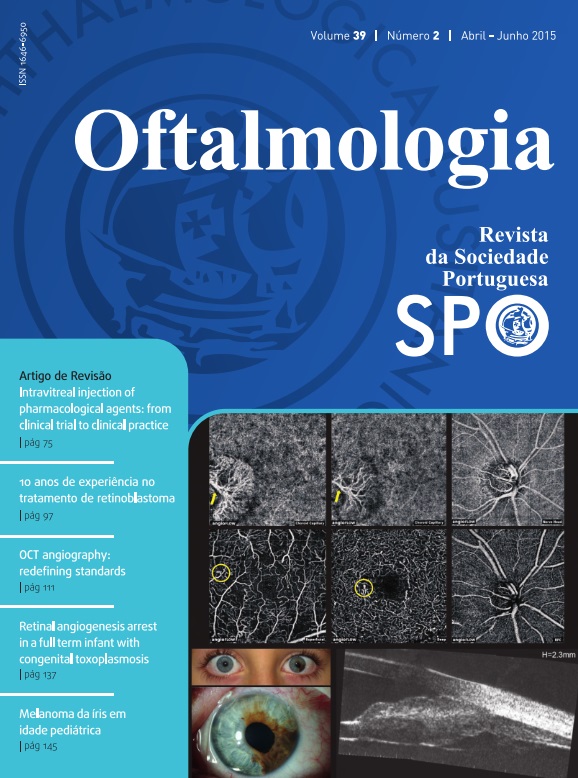INTRAVITREAL INJECTION OF PHARMACOLOGICAL AGENTS: FROM CLINICAL TRIAL TO CLINICAL PRACTICE
DOI:
https://doi.org/10.48560/rspo.7161Palavras-chave:
CNV, DME, Macular edema, intravitreal injections, anti-VEGF, intravitreal implants, corticosteroids, AMD, DR.Resumo
Intravitreal delivery bypasses the blood-retinal barrier, leading to a higher intraocular drug concentration for a longer period of time, while lessening the systemic toxicity. A wide variety of intravitreal pharmacological agents has been used: anti-infective (antibiotic, antifungal, and antiviral), anti-inflammatory (nonsteroidal anti-inflammatory agents, steroids and immunomodulators), anticancer agents, gas, anti-vascular endothelium growth factor (VEGF), among others1. Over the last decade, intravitreal corticosteroids and/or anti-VEGF have become the therapeutic backbone of several retinal disorders, including age-related macular degeneration (AMD), diabetic retinopathy (DR), retinal vein occlusions (RVO) and myopic neovascularization. Industry supported clinical research has helped propelling several drugs with encouraging visual and anatomic outcomes. With numerous novel therapies currently being investigated in clinical trials, the number of available drugs will likely continue to rise. High-quality imaging and the application of pharmacogenomic principles are probably guiding future therapies that through a comprehensive approach will hopefully meet the patients’ needs and expectations.
We should keep in mind that everyday clinical practice differs greatly from a clinical trial setting and this inevitably affects the treatment results. The dependence on the center’s resources (public or private) and agenda may delay the beginning of treatment, the interval between injections, between evaluations and injections (when performed separately), and even follow-up appointments. This usually leads to poorer than expected visual outcomes, patient dissatisfaction and physician frustration. Lack of patient motivation directly disturbs compliance and a vicious circle ensues. In order to provide the best possible treatment to our patients in a clinical setting, a balance between cost, effectiveness, compliance and agenda needs to be found.
The purpose of this paper is (1) to review the available drugs for intravitreal use, (2) to explore their approved indications and off-label use in the management of retinal diseases and (3) to present the treatment protocols currently being used at the Retinal Department of the Centro Hospitalar e Universitário de Coimbra (CHUC), Coimbra, Portugal.
Downloads
Downloads
Publicado
Como Citar
Edição
Secção
Licença
Não se esqueça de fazer o download do ficheiro da Declaração de Responsabilidade Autoral e Autorização para Publicação e de Conflito de Interesses
O artigo apenas poderá ser submetido com esse dois documentos.
Para obter o ficheiro da Declaração de Responsabilidade Autoral, clique aqui
Para obter o ficheiro de Conflito de Interesses, clique aqui







